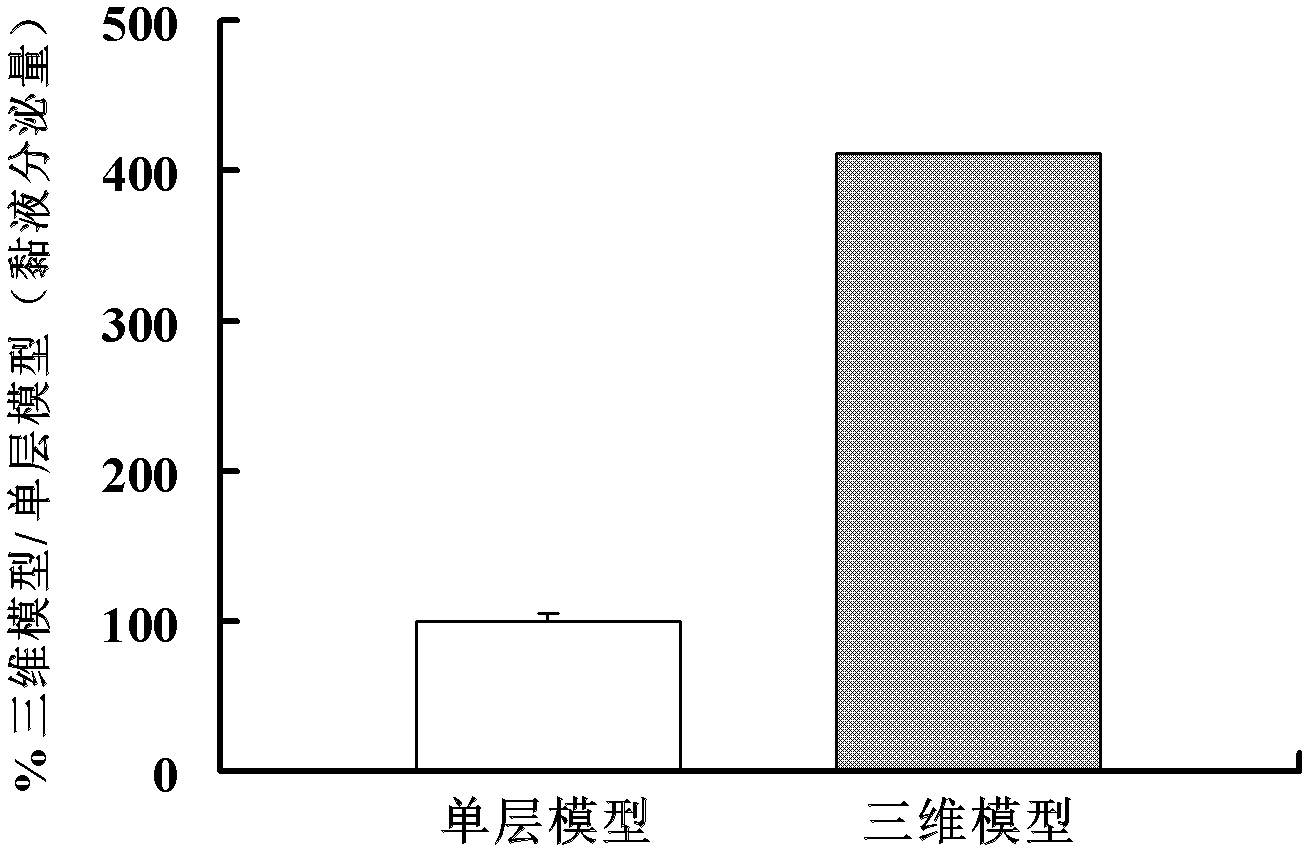Establishment of humanized three-dimensional intestinal mucosa model and application thereof
A technology of intestinal mucosa and humanization, applied in the field of medicine, can solve problems such as the undiscovered three-dimensional intestinal mucosa model
- Summary
- Abstract
- Description
- Claims
- Application Information
AI Technical Summary
Problems solved by technology
Method used
Image
Examples
Embodiment 1
[0030] Example 1 Constructing a three-dimensional intestinal mucosal model with polarity using the Transwell system
[0031] as follows figure 1 As shown, mesenchymal cells (such as fibroblasts) were seeded in extracellular matrix (such as collagen), and after incubation for 2 hours, the extracellular matrix was solidified, and a layer of mixed epithelial cells was planted on it, that is, a certain proportion of Caco- 2 cells and mucus-secreting cells (such as HT29-MTX cells), after two weeks of co-culture, a layer of immune cells (such as macrophages derived from THP-1 cells) was inoculated on the basal side of the Transwell. After the above four kinds of cells were co-cultured for one week, the model was completely differentiated, and the transmembrane electrical resistance value (TEER) was measured with a resistivity meter to determine the tightness and integrity of the epithelial cell layer, and then it could be used for the transmembrane transport experiment of drugs.
...
Embodiment 2
[0034] Example 2 Using the three-dimensional model to study the membrane-permeability of passive paracellular transport marker compounds
[0035] Fluorescent yellow was used as a marker compound for paracellular transport, and the Caco-2 monolayer cell model was used as a control. The three-dimensional model was established according to the above method. Transmembrane electrical resistance (TEER) detects the tightness and integrity of the epithelial cell layer, and the TEER value reaches 250Ω·cm 2 The 3D model of can be used for transport experiments. Add 0.5ml of 20μg / ml fluorescent yellow liquid to the culture medium on the top side of the cell layer (villi side, side A), and add 1.5ml blank buffer solution to the bottom side (basal side, side B) at the same time to start the transport experiment, respectively At 30 min, 60 min, 90 min, and 120 min, 100 μl of the drug solution was taken from the bottom side, and 100 μl of blank buffer solution was supplemented at the same t...
Embodiment 3
[0036] Example 3 Using the three-dimensional model to study the membrane-permeability of marker compounds passively transported across cells
[0037] Propranolol was used as a marker compound for passive transcellular transport, and the Caco-2 monolayer cell model was used as a control. The three-dimensional model was established according to the above method. During the culture period, the medium was changed every other day until about 21 days after incubation, and the epithelial cells were completely differentiated. At the same time, the tightness and integrity of the epithelial cell layer were detected by measuring the transmembrane electrical resistance (TEER), and the TEER value reached 250Ω·cm 2 The 3D model of can be used for transport experiments. Add 0.5ml of 50μM propranolol drug solution to the culture medium on the top side of the cell layer (villi side, side A), and add 1.5ml blank buffer solution to the bottom side (basal side, side B) at the same time to start t...
PUM
 Login to View More
Login to View More Abstract
Description
Claims
Application Information
 Login to View More
Login to View More - R&D
- Intellectual Property
- Life Sciences
- Materials
- Tech Scout
- Unparalleled Data Quality
- Higher Quality Content
- 60% Fewer Hallucinations
Browse by: Latest US Patents, China's latest patents, Technical Efficacy Thesaurus, Application Domain, Technology Topic, Popular Technical Reports.
© 2025 PatSnap. All rights reserved.Legal|Privacy policy|Modern Slavery Act Transparency Statement|Sitemap|About US| Contact US: help@patsnap.com



